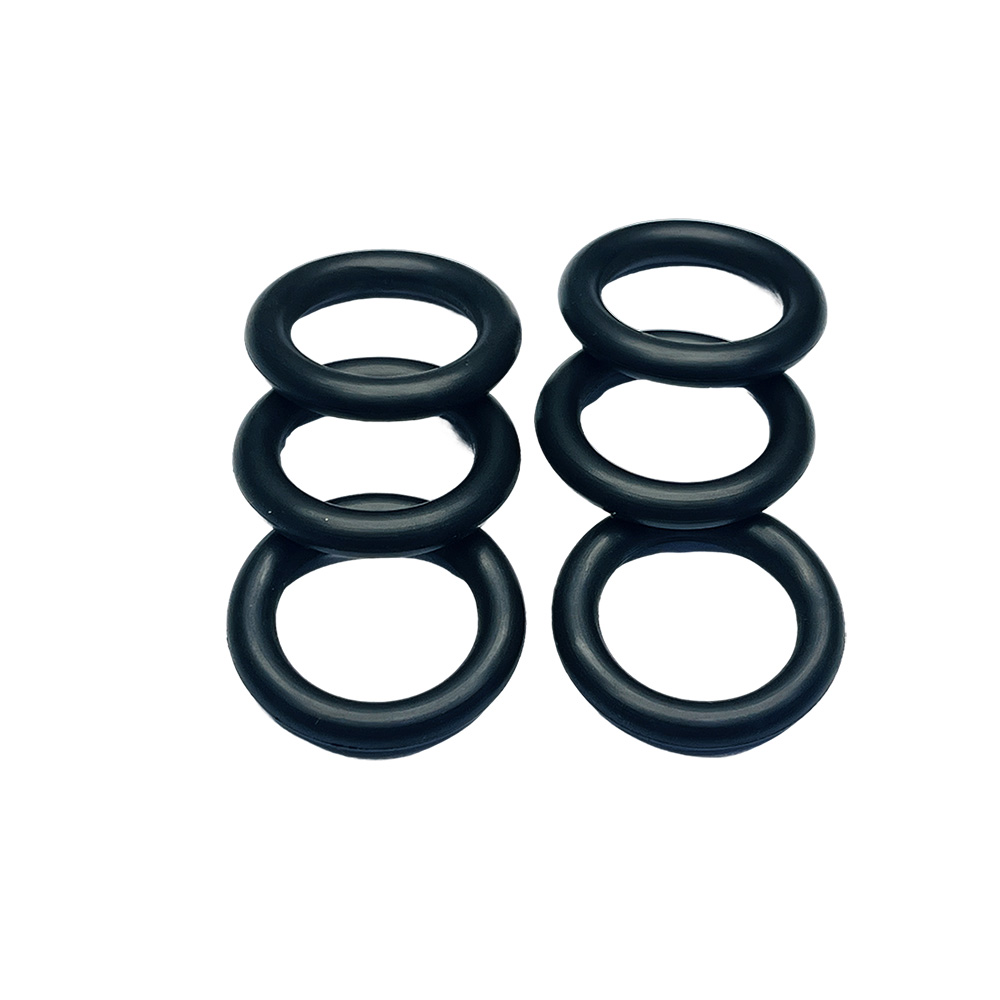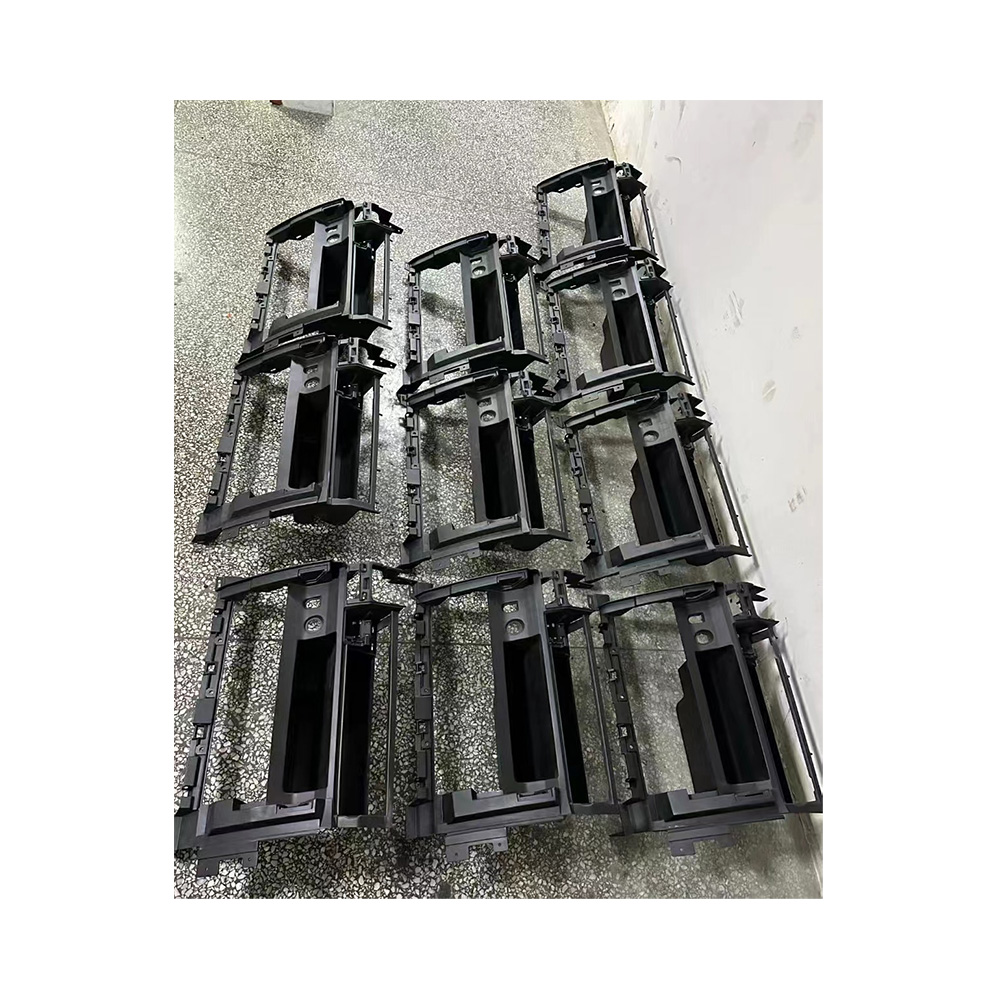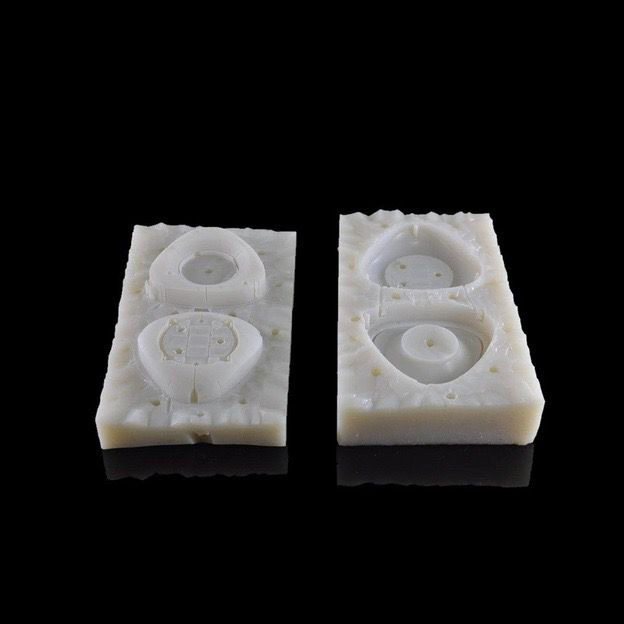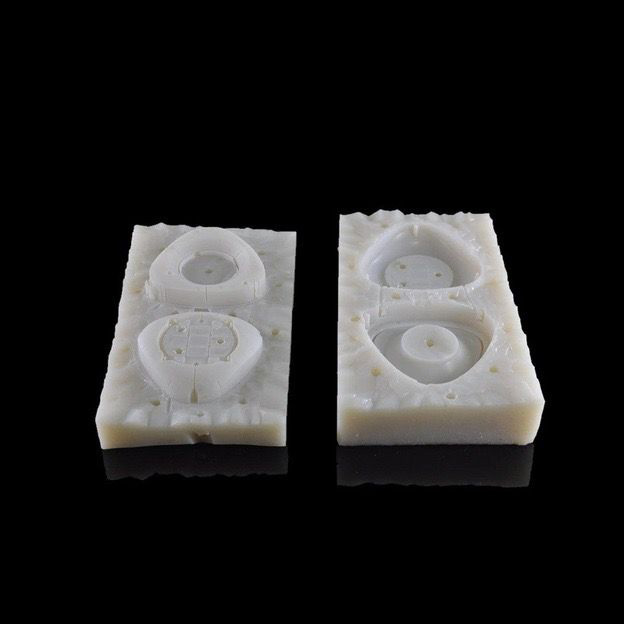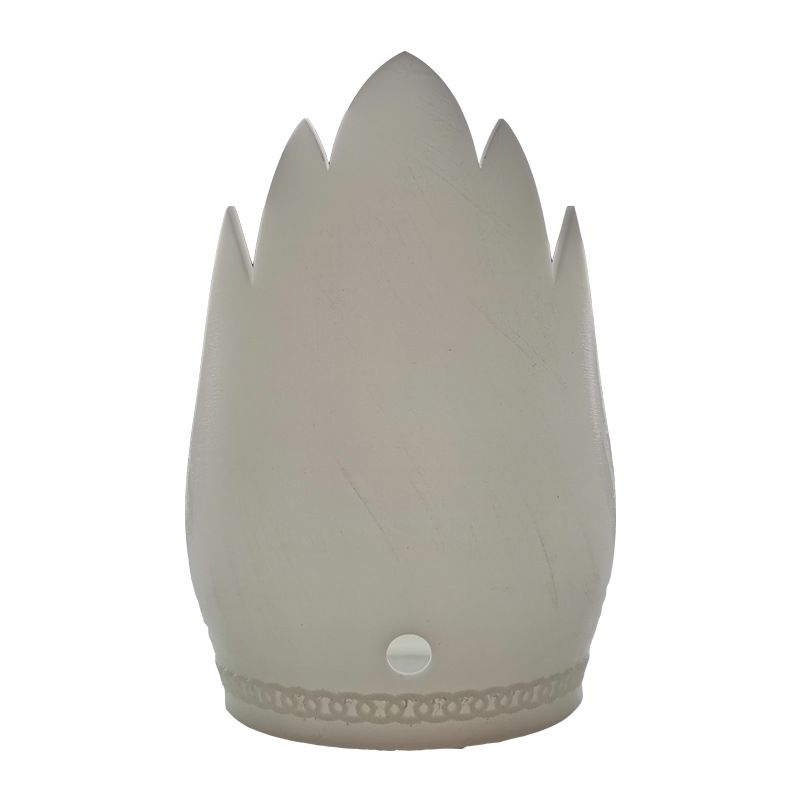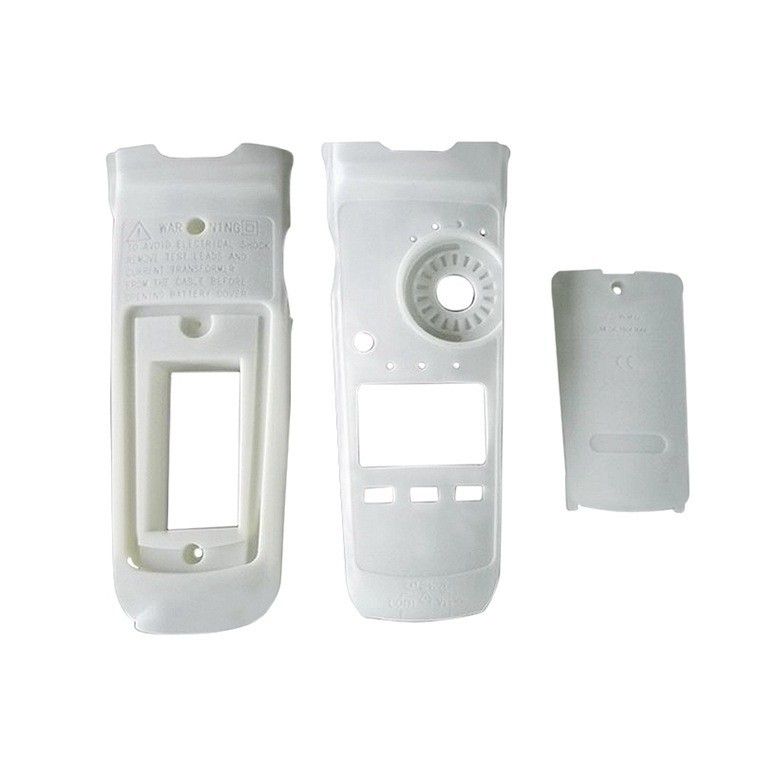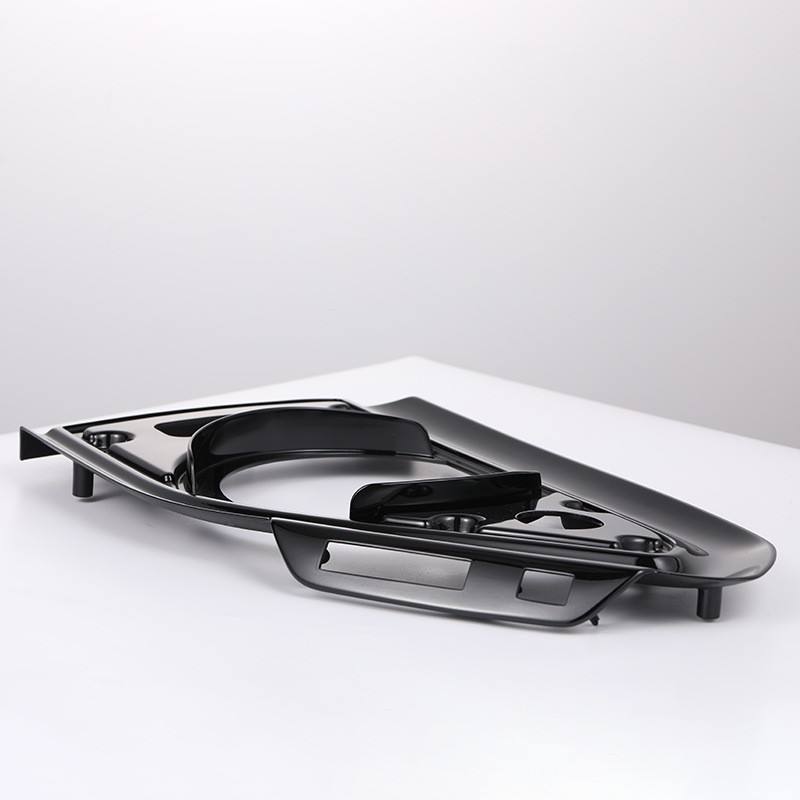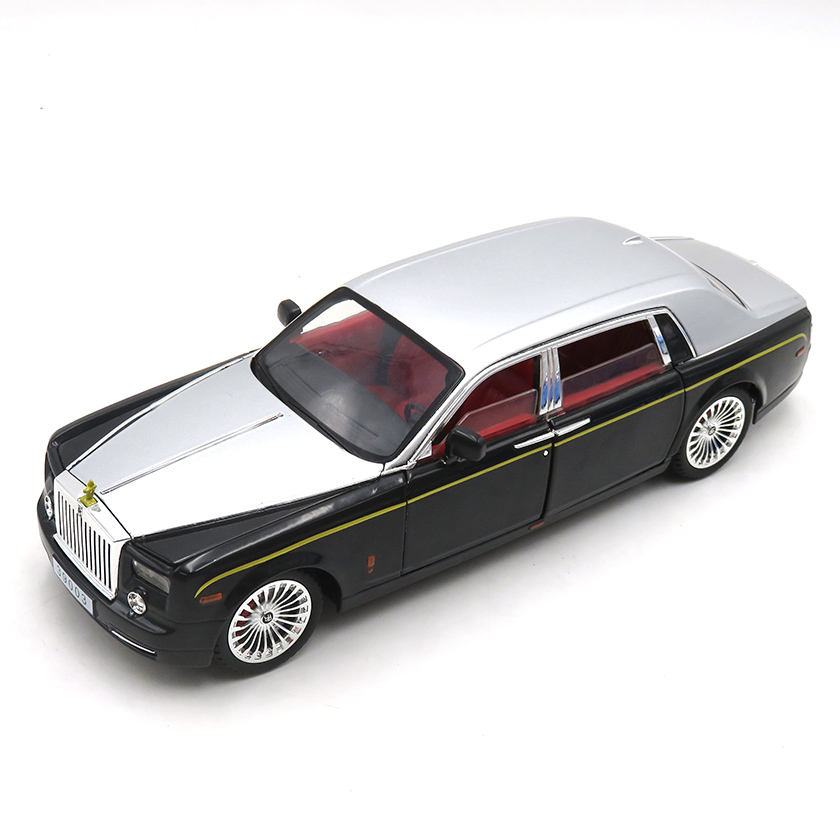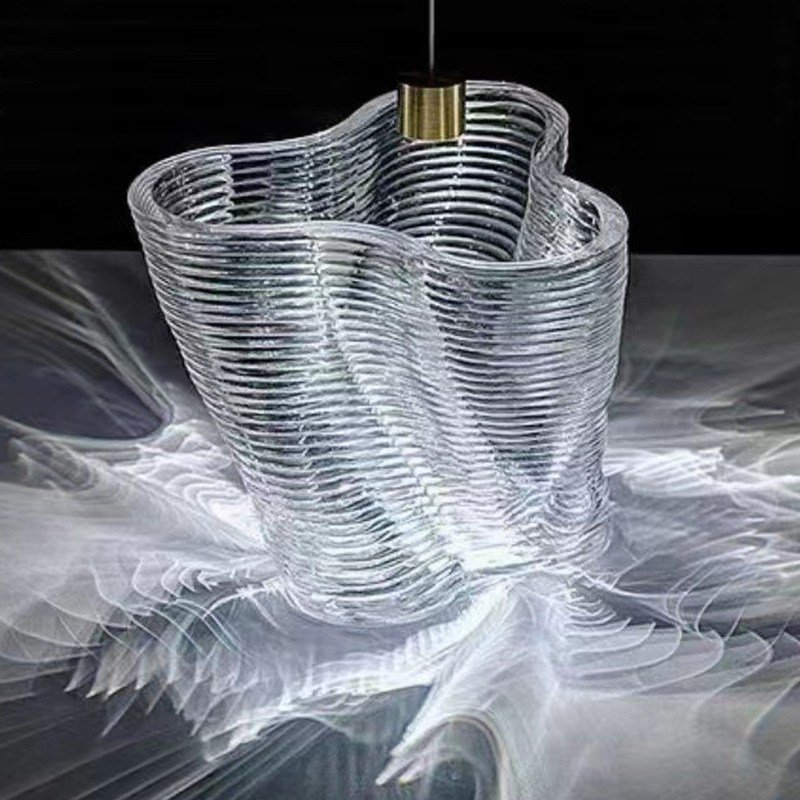Product Detail
Here's how the vacuum casting process works at ABBYLEE :
Master Model: A master model or prototype part is created using various methods such as 3D printing, CNC machining, or hand sculpting.
Mold Making: A silicone mold is created from the master model. The master model is embedded in a casting box, and liquid silicone rubber is poured over it. The silicone rubber cures to form a flexible mold.
Mold Preparation: Once the silicone mold is cured, it is cut open to remove the master model, leaving behind a negative impression of the part within the mold.
Casting: The mold is reassembled and clamped together. A liquid two-part polyurethane or epoxy resin is mixed and poured into the mold cavity. The mold is placed under a vacuum chamber to remove any air bubbles and ensure complete material penetration.
Curing: The mold with the poured resin is placed in an oven or temperature-controlled chamber to cure the material. The curing time may vary depending on the type of material used.
Demolding and Finishing: Once the resin has cured and hardened, the mold is opened, and the solidified part is removed. The part may require trimming, sanding, or further finishing processes to achieve the desired final appearance and dimensions.
Vacuum casting offers advantages like cost-effectiveness, quick turnaround time, and the ability to produce complex parts with high detail and accuracy. It is often used in prototyping and low-volume production to test design concepts, create market samples, or produce limited batches of finished parts.
Application
Vacuum casting process is widely used in aerospace, automotive, home appliances, toys and medical equipment and other fields, suitable for new product development stage, small batch (20-30) sample trial production, specifically for automotive parts research and development, design process to make small batch plastic parts for performance testing, loading road test and other trial production work. The common plastic parts in the automobile such as air conditioner shell, bumper, air duct, rubber coated damper, intake manifold, center console and instrument panel can be quickly and small-batch manufactured by silicone remolding process in the trial production process.2, decorative use: such as daily necessities, toys, decorations, lighting, watch shell, mobile phone shell, metal buckle, bathroom accessories. The surface quality requirements of die casting parts are relatively high, requiring smooth surface and beautiful shape.

Parameters
| Number | project | parameters |
| 1 | Product Name | Vaccum Casting |
| 2 | Product Material | Similar to ABS,PPS,PVC,PEEK,PC、PP、PE、PA、POM、PMMA |
| 3 | Mold Material | Silica come |
| 4 | Drawing Format | IGS,STP, PRT,PDF,CAD |
| 5 | ServiceDescription | One-stop service to provide production design, mold tooling development and mould processing. Production and technical suggestion. product finishing, assembly and packaging, etc |
Post-Treatment Of Vaccum Casting
Spray paint.
Two - or multi-color sprays are available in different paint finishes including matte, flat, semi-gloss, gloss or satin.
Silkscreen printing.
Used on larger surfaces, as well as when mixing multiple colors to produce more complex graphics
Sand blasting.
Create a uniform sanding effect on the surface of the machined part to remove traces of machining and grinding
Pad printing.
Short cycle, low cost, fast speed, high precision
Quality Inspection
1. Incoming inspection: Inspect raw materials, components or semi-finished products provided by suppliers to ensure that their quality complies with the purchase contract and technical specifications.
2. Process inspection: Monitor and inspect each process in the production process to promptly discover and correct unqualified products to prevent them from flowing into the next process or finished product warehouse.
3. Finished product inspection: Quality inspection department at ABBYLEE will use professional testing machines: Keyence, to conduct precise testing of products. Comprehensive inspection of finished products, including appearance, size, performance, function, etc., to ensure that their quality meets factory standards and customer requirements.
4. ABBYLEE special QC inspection: Sampling or full inspection of finished products about to leave the factory to verify whether their quality meets the requirements of the contract or order.
Packaging
1.Bagging: Use protective films to package the products tightly to avoid collision and friction. Seal and check for integrity.
2.Packing: Put the bagged products into cartons in a certain way, seal the boxes and label them with the name, specifications, quantity, batch number and other information of the product.
3.Warehousing: Transport the boxed products to the warehouse for warehousing registration and classified storage, waiting for shipment.





